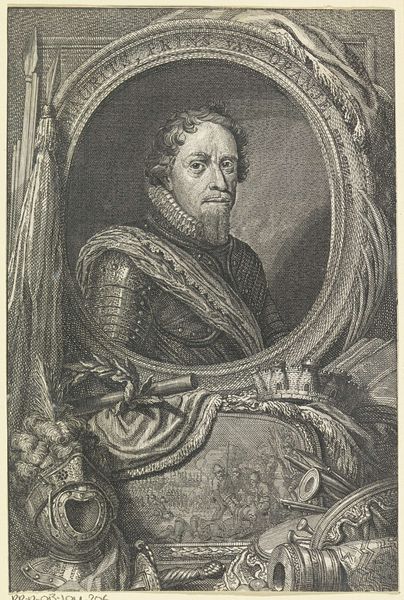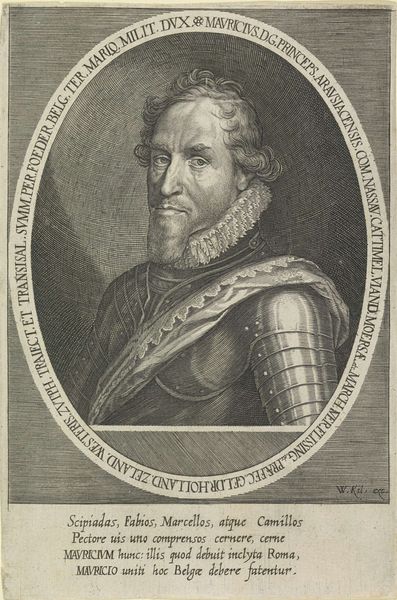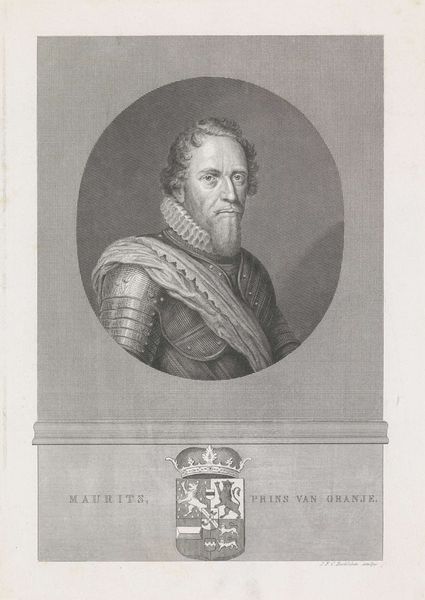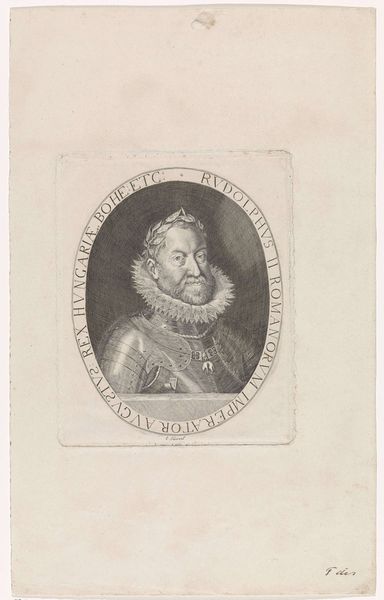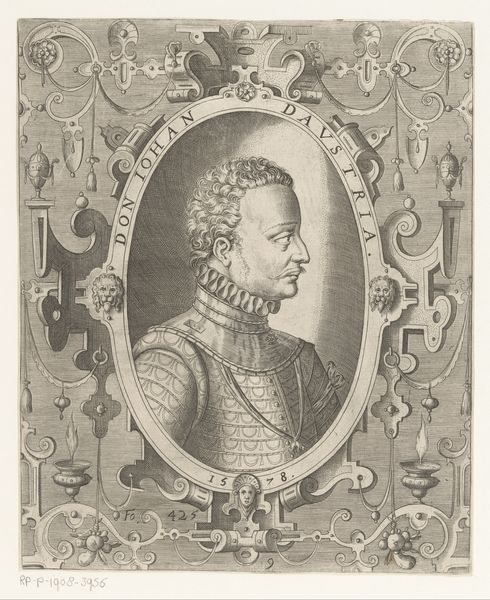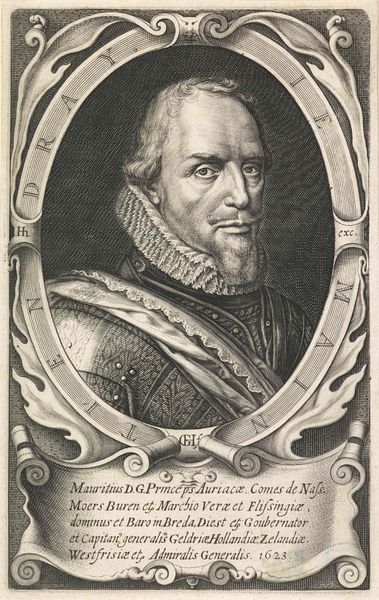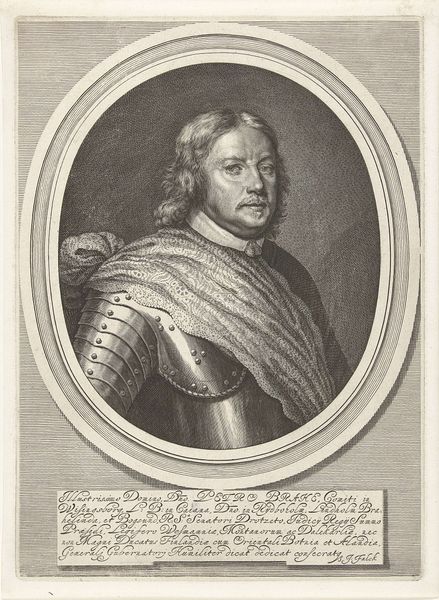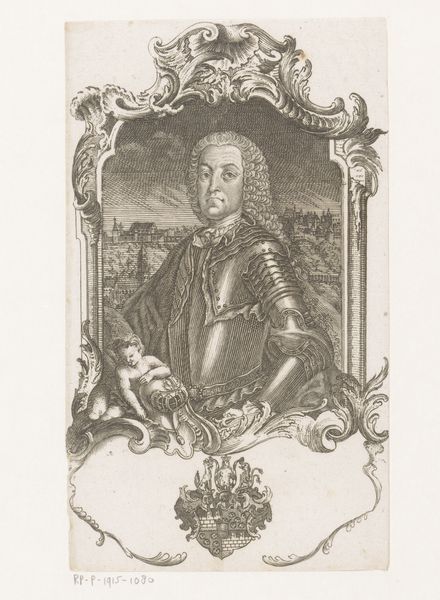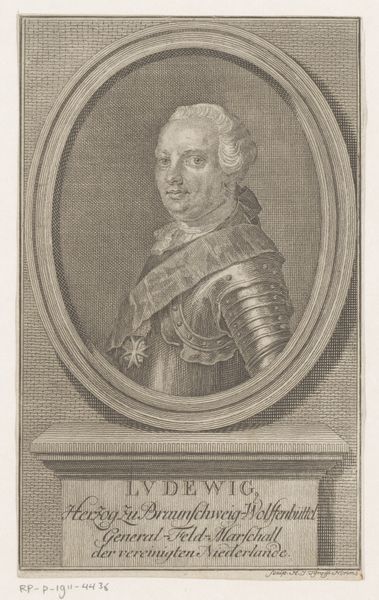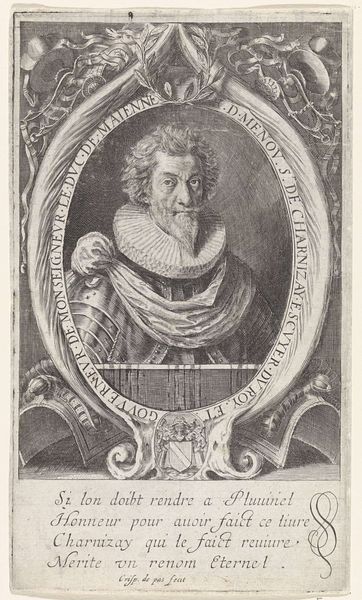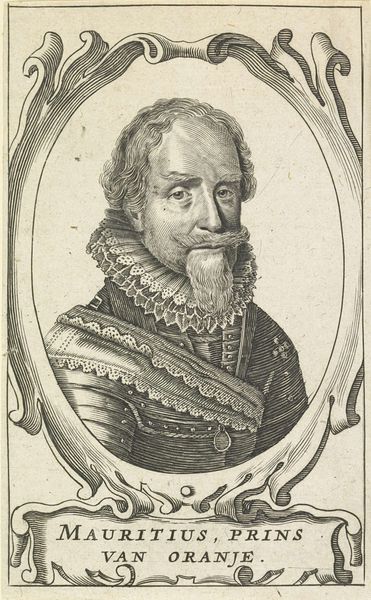
engraving
#
portrait
#
baroque
#
old engraving style
#
portrait drawing
#
genre-painting
#
engraving
Dimensions: height 369 mm, width 239 mm
Copyright: Rijks Museum: Open Domain
Curator: Before us, we have an engraving dating back to 1748. Pieter Tanjé is the artist, and the piece is titled "Portret van Maurits, prins van Oranje" or "Portrait of Maurice, Prince of Orange". It resides here at the Rijksmuseum. Editor: It has an interesting feel to it. The textures really draw me in – the rigid metal of the armor contrasted with the soft fabric draping the frame. It has a powerful aura. Curator: Portraits like this served an important function in the 18th century. This wasn't just about likeness. It’s about projecting an image, and creating a historical narrative, solidifying princely legacy and reinforcing power structures of the Dutch Republic. The very act of creating and circulating these portraits solidified their political weight. Editor: I see all kinds of symbols of power surrounding the subject. He's encased within military regalia—armor, weaponry, all pointing towards a victorious commander. Then there's the olive branch as a symbol for his efforts at diplomacy. The combination paints an intriguing, although perhaps idealized, picture. Curator: And let’s not overlook how baroque style here presents not only the sitter's likeness, but elevates it, even monumentalizes it in ways designed to evoke authority and dynastic succession. Think of how portraits were strategically displayed, and disseminated through prints to publicize a leader's virtues. Editor: It all coalesces to depict an established, enduring leader. Every detail feels deliberate. Do you feel the framing, with elements like a detailed helmet at the lower left and battlefield background below the portrait, reinforces a link between individual merit and larger historical forces? Curator: Absolutely. In studying pieces like this we see that artistic representations are shaped as well by political intention. Art serves specific ideological functions. This is why exploring portraits within collections, like here in Rijksmuseum, becomes so enlightening. Editor: I now realize I hadn't just seen the Prince but what the engraver wants me to see about power and a ruler’s lasting influence through symbols and presentation. Curator: Exactly. Consider how Tanjé’s work becomes intertwined with Maurits's own role as figurehead.
Comments
No comments
Be the first to comment and join the conversation on the ultimate creative platform.
